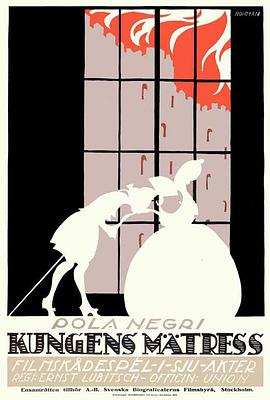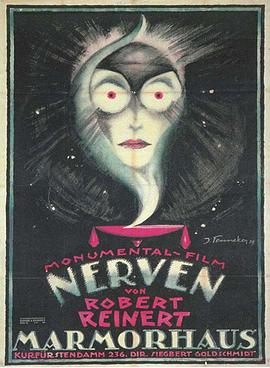爱德华·冯·温特施泰因-搜索结果
-
杜巴里夫人 Madame DuBarry
导演:恩斯特·刘别谦 编剧:Norbert Falk, 汉斯·克雷利
主演:保罗·比安斯费尔特, 维利·凯泽-海尔, 波拉·尼格丽, 埃米尔·雅宁斯, 哈利·利特克, 爱德华·冯·温特施泰因, 莱茵霍尔德·叔泽尔, 埃尔泽·贝尔纳, Fred Immler, Gustav Czimeg
之后,让娜先后成为了杜巴瑞伯爵(爱德华·冯·温特施泰因 Eduard von Winterstein 饰)和法国国王路易十五(爱米尔·强宁斯 Emil Jannings 饰)的情妇。 -
神经质 Nerven
类型:剧情片电影
导演:罗伯特·莱纳特 编剧:罗伯特·莱纳特
主演:爱德华·冯·温特施泰因, Lia Borré, 埃尔娜·莫雷纳, Paul Bender, Lili Dominici, Rio Ellbon, Margarete Tondeur, Paul Burgen
在《神经》中,编剧、导演和制片人罗伯特-莱纳特试图捕捉战争和苦难造成的 '神经流行病',这种流行病 '让人发疯'。这部描绘 1919 年德国生活的独特影片在慕尼黑取景拍摄,描述了社会各阶层不同人群的案例: 在灾难和社会动荡中失去理智的工厂主罗洛夫、成为群众英雄的教师约翰和变成激进革命者的玛尔亚。慕尼黑电影博物馆利用不同的片段,重现了这部被遗忘的德国经典影片,它是一部历史文献,并预示了 20 世纪 20 年代表现主义电影的元素。
原文简介:
In Nerven, writer-director-producer Robert Reinert tried to capture the 'nervous epidemic' caused by war and misery which 'drives people mad'. This unique portrait of the life in 1919 Germany, filmed on location in Munich, describes the cases of different people from all levels of society: Factory owner Roloff who looses his mind in view of catastrophies and social disturbances, teacher John who is the hero of the masses and Marja who turns into a radical revolutionary. Using different fragments the Munich Film Museum could reconstruct this forgotten German classic which is a historic document and anticipates already elements of the Expressionist cinema of the 1920s.
Having a more complete version of Nerven available is a wonderful contribution to our understanding of film history. The standard version was known to very few students of cinema, and though it was impressive, it was somewhat incoherent. We are still lacking a lot of footage, but Stefan Droessler and his team have added what they could and arranged the sequences into a more intelligible order. The quality of the restoration, moreover, makes the film's visual style even more vivid and unsettling.
Released shortly before The Cabinet of Dr. Caligari, Nerven ought to have entered the Expressionist canon. Its themes echo the movement's post-Romantic attack on capitalism and the modern conception of the anguished soul. Its narrative plays out the implications of such icons of Expressionist art as convulsive crowds and men's homicidal urges toward women. Just as important, the film's pictorial design finds an original way to convey the tale's emotional tenor, the sense of nervous anxiety strung ever tighter. Significantly, Reinert achieves a unique look without recourse to the painted sets of Caligari, but through a unique use of other cinematic resources.






